Solar Decathlon Europe 2012
Solar Decathlon Europe 2012 brings the world's most innovative solar-powered homes to Madrid.
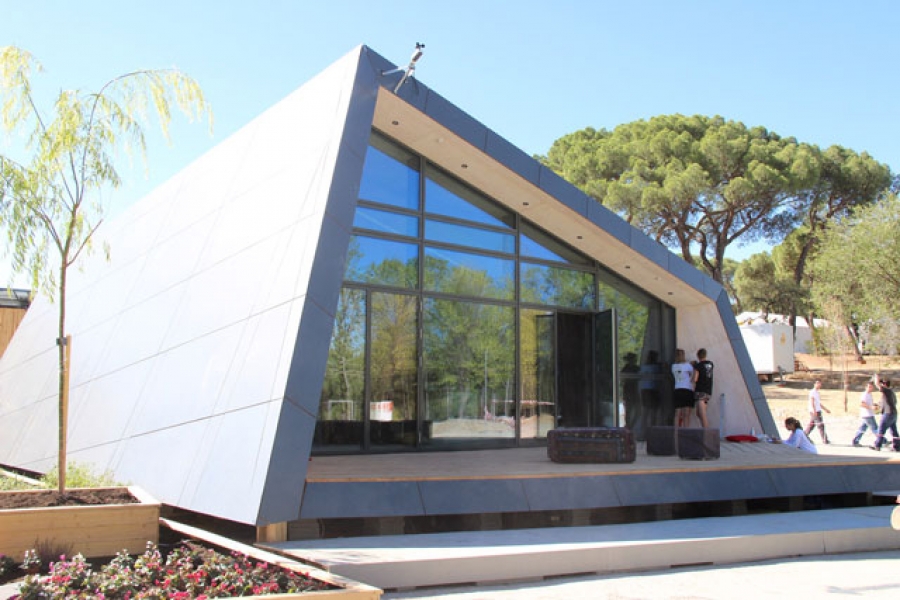
The 2012 Solar Decathlon Europe kicked off on September 14 along the banks of Madrid’s Manzanares River. The international event, which works to promote research and development of efficient solar homes, consists of various multi-disciplinary collegiate teams from around the world. This year, 47 teams submitted design proposals, but only 18 of the most innovative designs are currently competing as finalists for the intensive two-week event, commonly known as the “Olympics of Green Architecture.” In addition to the principal focus of showcasing the latest in solar energy technologies, most of the designs this year are showing signs of strong vernacular architecture, incorporating local materials in order to meet community needs and promote local traditions.
Most of the teams work for years to perfect their designs as well as to find economic and technical sponsors. Once in Madrid, the teams work non-stop to construct their homes in preparation for the intensive competition. To reduce actual construction time, the majority of the houses are prefabricated modular homes, but it can take weeks to install the various technical and aesthetic elements in the structures themselves. Each design will be judged by a jury using 10 different competition criteria that include architecture, engineering and construction, energy efficiency, electrical energy balance, comfort conditions, functionality, communication and raising social awareness, industrialization and market viability, innovation, and sustainability.
1. (e)co House | Spain
ETSAV’s (e)co Team returns to the 2012 Solar Decathlon Europe as one of this year’s strongest contenders. Some of the (e)co Team participants took first place in the architecture category at the previous Solar Decathlon Europe in 2010, and it looks like they’ve come back ready to maintain that title. Their design is based on a new model of “low cost” sustainability and, at an estimated cost of 100,000 euros, it’s one of the most affordable projects in the competition.
co2.jpg)
The transparent exterior shell of the house uses greenhouse properties to regulate temperature control. This design allows the house to trap heat in the winter and it creates shade during the summer months. This “box in a box” design uses timber modules for the interior living space that can be adapted to many configurations, even allowing the rooftop to be converted into an extra living area. The modules themselves are highly insulated, adding to the maximum energy efficiency of the (e)co House.
2. Patio 2.12 House | Spain
Composed of students from the universities of Seville, Granada, Malaga, and Jaén, Andalucía Team’s Patio 2.12 is one of many designs at this year’s competition that is visibly inspired by vernacular elements. Traditionally, Andalusian homes are built with a central patio that serves as the social center for the family. Patio 2.12’s design uses this open space to meld the relationship between the interior and exterior, allowing for a typical Mediterranean mix of light, shade, and social interaction with a distinctively modern twist.
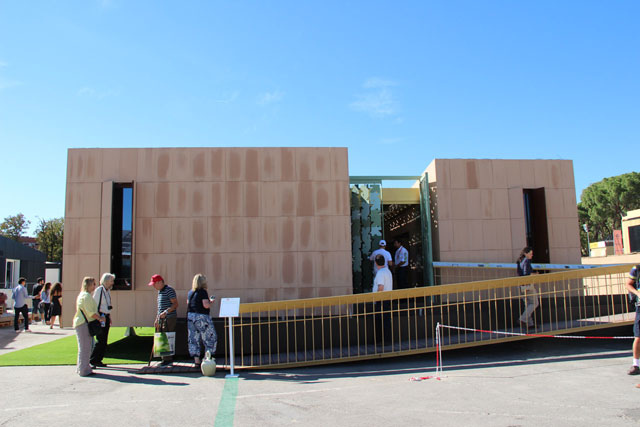
Patio 2.12’s transparent roof allows natural light into the interior communal center of the home, while a layer of faux vines on the roof provides a shaded environment. In addition to using the patio as the primary design feature, traditional Spanish materials like ceramics are also implemented to maximize temperature control. The exterior walls of Patio 2.12 are equipped with ceramic air chambers, which take advantage of the “sweating” properties of the material itself to create a drip irrigation effect that aids in the cooling of the house during the scorching Andalusian summer months.
3. Casas em Movimento | Portugal
Portugal’s University of Oporto brings Casas em Movimento (Houses in Motion) to this year’s competition. The sophisticated design explores the concept of the house as a living element. The structure uses a moving solar panelled skin to capture the sun’s variations, absorbing the maximum potential of the sun to create energy, light, and heat at various times during the day. This moving life cycle, referred to as “the sunflower effect,” adapts itself to the daily routine of the sun, which in turns feeds the energy needs of the residents.
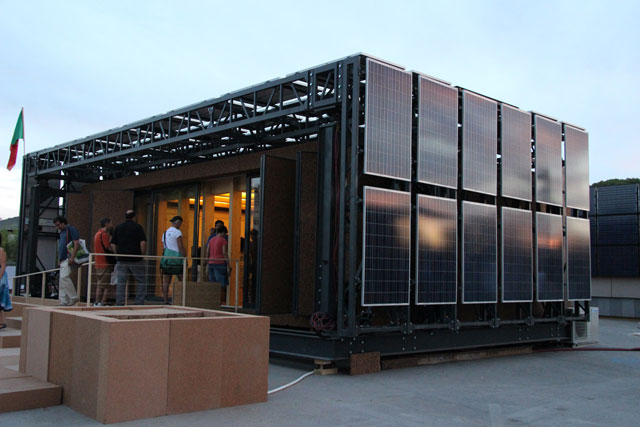
While the movement of the modular flap is Casas em Movimento’s crowning glory, the ability to add multiple modules to the home as family members come and go gives this house a practical aspect that contrasts with its avant-garde look.
4. Omotenashi House | Japan
Chiba University’s entry, the Omotenashi House, uses design elements based on traditional aspects of Japanese hospitality. A 21st century version of a traditional tea house, the Japanese influence is not only visible in the aesthetic design but also in its interior and exterior materials. The interior walls are moveable partitions made of translucent Japanese paper, which allows the transmission of natural light as well as providing privacy. The floors are covered with modernized versions of Japanese tatami mats, which are completely natural, recyclable, and biodegradable. Internally and externally, the Omotenashi House is equipped with various food-growing elements that take cues from the farming techniques used in Japanese rice paddies and traditional plant cultivation.
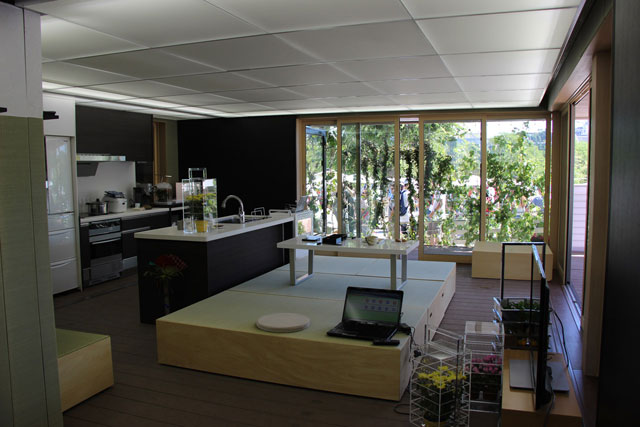
5. Pi House | Spain
The University of Zaragoza’s Pi House is the only house in the competition that is a circular structure. The bold design is futuristic, sleek, and, thanks to its concrete construction, one of the most durable structures in the competition. Concrete reinforced with glass was chosen for its high thermal mass, providing optimal cooling and heating conditions all year long.
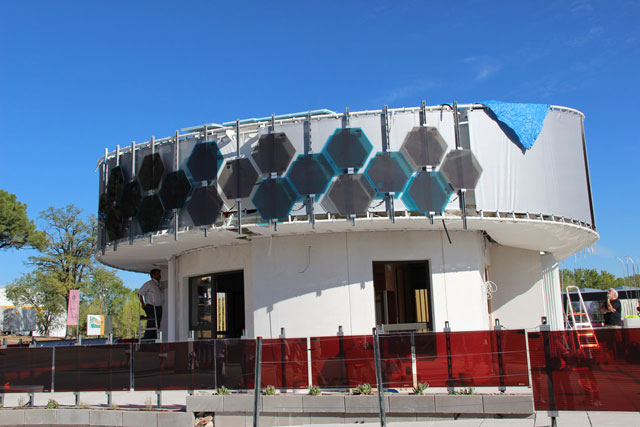
The key feature of the Pi House, however, is its revolving first floor, which slowly orbits as it follows the sun’s daily trajectory, making it an optimal system for capturing the maximum solar output throughout the day.
6. PRISPA House | Romania
The PRISPA House was designed by the students of the Technical University of Civil Engineering of Bucharest, the "Ion Mincu" University of Architecture and Urbanism in Bucharest, and the University Politehnica of Bucharest and the National University of Arts. One of the most affordable houses in the competition, a fully equipped Prispa solar home boasts a reasonable price tag of about 70,000 euros.
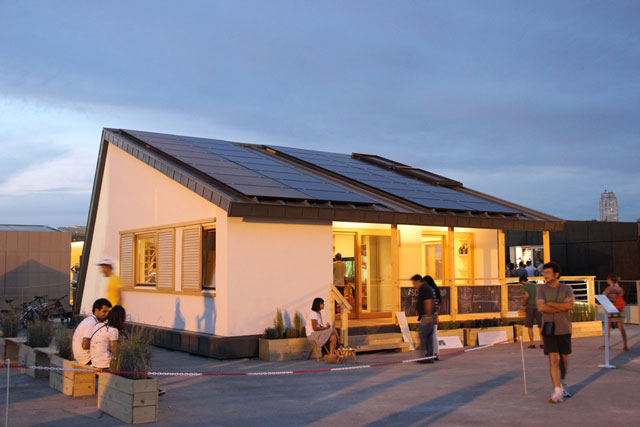
Like many of the other entries, the PRISPA house is modular: reconfigurable elements maximize the design’s ample living space. Although PRISPA may be one of the most sensibly designed houses on the lot, that doesn’t mean it’s without distinct character.
The PRISPA design stands out for its obsessive energy-efficiency strategy. Every aspect of the house is strategically designed to maximize full use of its own thermal inertia. The materials were chosen for their ability to absorb, maintain, and regulate energy at a highly efficient automatic level. Along with wood, metal, and concrete, PRISPA uses clay, a tradition Romanian building material, on interior walls for its hygroscopic properties.
7. Counter Entropy House | Germany
Like the majority of the contestants, RWTH Aachen University’s Counter Entropy House focuses on maximizing and conserving energy, but it’s the team’s determination to use local repurposed materials that definitely makes this design stand out among its competitors.
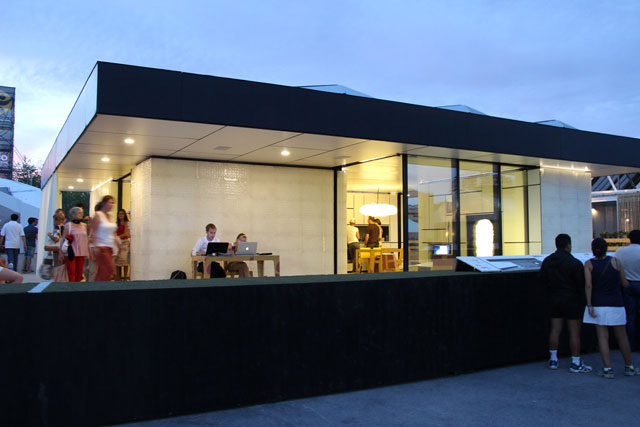
Old beams from the demolished Tivoli stadium were deemed a perfect (and non-toxic) solution for the design’s flooring needs. The wood is weather-resistant and used in both the interior and exterior flooring. The sleek exterior façade as well as the interior walls are also relics of the past; the transparent panels are made of melted down, polished CDs.
Although the Counter Entropy House is based on the idea of realistic construction using upcycled materials, the house doesn’t forgo modern technology completely. The Counter Entropy house uses a specifically adapted iPad and iPhone app to control the house’s technical system, allowing easy access to the important functions of the house.
8. FOLD House | Denmark
Denmark’s FOLD House arrives on the competition scene with one of the most distinct designs at Solar Decathlon Europe 2012. The FOLD House’s theme stems from three basic principles: embrace, tune, and share. Team DTU’s modern design “embraces” the resident’s quality of life and serves as protection while providing local natural resources. The “tune” aspect of the house refers to FOLD’s ability to take on multiple interior configurations in order to best meet the living needs of its residents. And the “sharing” principle aims to establish a “solar democracy” based on the three aspects of the general sustainability concept: economy, society, and environment.
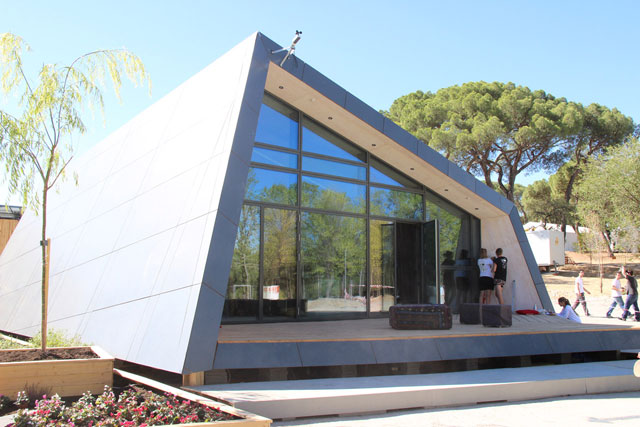
FOLD has a unique energy strategy that sees a green wall to the west and a light wall to the east, joining interior and exterior forces to not only take advantage of maximum solar potential, but also to create a naturally illuminated living space. FOLD’s “Robin Hood” nickname stems from its ability to produce more energy than it uses and its capability of supplying the surrounding community with its surplus.
9. Astonyshine | France and Italy
Astonyshine is a collaboration of four universities, the École des Ponts ParisTech and ENSA Paris-Malaquais in France and the University of Ferrara and the Polytechnic of Bari in Italy. This team is one of the most culturally diverse in Solar Decathlon Europe 2012, and it shows in their unique design.
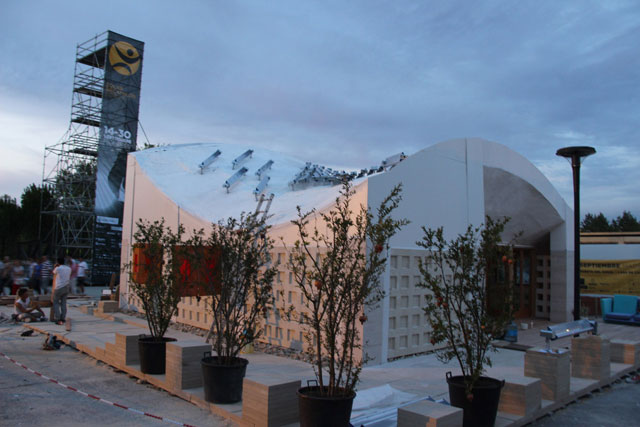
The Astonyshine house is the result of using the most efficient materials at the lowest cost and wrapping it all up in one very attractive design. The house stands out not only for its sloped appearance but also for its bold choice of building materials – Astonyshine is built of freestone, which has not been used before at Solar Decathlon Europe. Freestone has natural hygrothermal and self-ventilation properties, making it a durable building material for any climate. Freestone is a low-tech and low-cost building option and, due to its aesthetic appeal, has the potential to be the next big thing in sustainable and energy-efficient design.
10. Sumbiosi House | France
Team Aquitaine Bordeaux Campus (students from the ENSAP Bordeaux, ENSAM Centre de Bordeaux-Talence, ENSElRB, ISIC, IUT de Bordeaux 1, and Lycée Haroun Tazieff) brings the Sumbiosi House to Madrid. The principal feature of this design is its high-performance thermal envelope of natural insulation. The ABC team used a Landes forest maritime pine known for its excellent thermal qualities. Also focusing on natural ventilation elements, the optimized form of the roof takes advantage of the Venturi effect, acting as a natural and accelerated exhaust air circulation system.
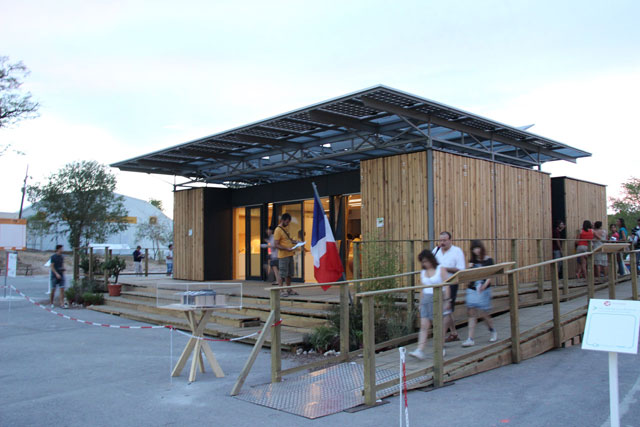
No Solar Decathlon entry would be complete without water conservation techniques. Sumbiosi is built with an impressive self-irrigating green roof, but it’s the structure’s grey water treatment system that has people talking (or mainly wincing). The water-filtering system incorporates the use of earthworms into the grey water filtration process, taking full advantage of the Earth’s natural resources.
11. SML House | Spain
Valencia’s Universidad CEU Cardenal Herrera brings the SML House to Solar Decathlon Europe 2012. Although one of the most energy-efficient homes in the competition, with 21 rooftop panels and east and west solar walls, the house is characterized fundamentally by its extreme modular efficiency. Its architectural strongpoint lies in its multiple configurational possibilities, hence its name, SML House (Small, Medium, and Large). The maximum size of this house is 74 square meters and includes up to 6 prefabricated modules that can be arranged in countless number of layouts. This flexibility to maximize and minimize the home’s size throughout the lifecycle of a single family makes the SML system constructive efficiency at its best.
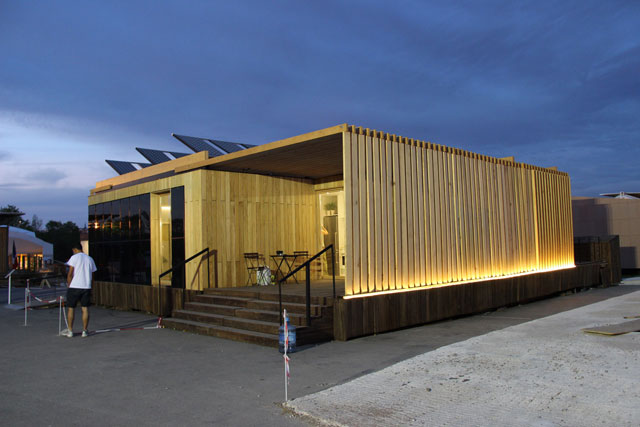
12. Ekihouse | Spain
University of the Basque Country’s EHU Team brings us the Ekihouse. This “green machine” is focused on maximizing energy through the use of bioclimatic concepts, working with various active systems to provide an ultimate level of energy conservation within the house.
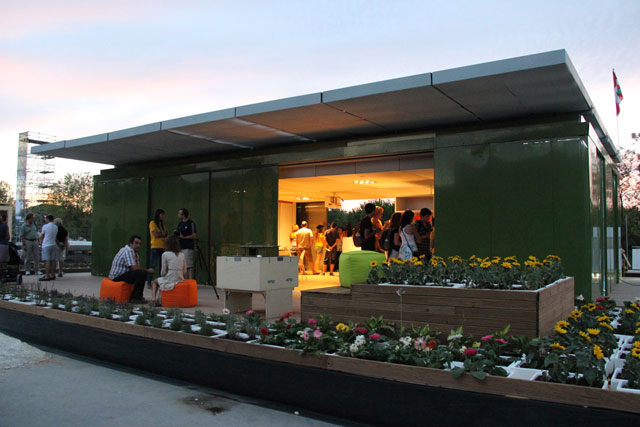
While the green perforated facades and the Termogenik wood flooring aids in the overall energy efficiency of the Ekihouse, it’s the roof that sees most of the energy action. The photovoltaic and thermal solar panels on the rooftop are positioned on four sliding mounts. This innovative system creates an efficient tri-fold use for the panels. The primary function of the panels is, of course, to maximize solar energy absorption, but as the panels themselves are movable, they are used to shade the patio once extended. In addition, the open panels allow hot air to escape through the roof, cooling the interior. The temperature inside the house also uses an evaporative cooling system where an “integrated mist system” evaporates heat, cooling the temperature inside the house and providing homeowners with the optimal level of energy management.
13. Med in Italy | Italy
The exterior of Team Roma’s design, Med in Italy, may not be exactly eye-catching, but don’t let that conservative exterior fool you. Team Roma, comprising students from Universita di Roma "La Sapienza" and Universita di Roma Tre, combined a mysteriously minimalistic exterior with pure Italian design inside.
Stepping behind the privacy wall onto the veranda of the “Mediterranean House of Tomorrow” is like walking into a private oasis. Inside, the living space is light and airy and, in typical Italian fashion, combines the most practical elements with whimsy.
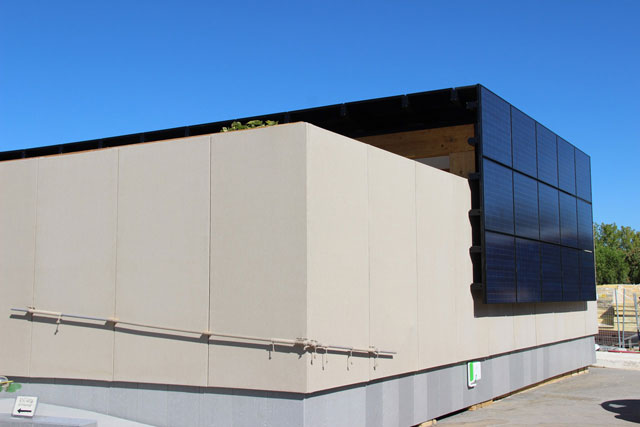
The first thing that may catch your eye is the long fish painted along the main wall, but this is not just art for art’s sake. The artwork is made of coarse sand, which after collecting the sun’s rays throughout the day, illuminates the living area in the evening time. In addition to this quirky lighting element, the walls themselves are installed with sand-filled aluminium tubes that act as a natural insulation and assist in temperature control.
These innovative features, along with coatings of natural insulation made of wood wool (or excelsior), ensure a thermal balance in order to provide a temperate climate all year long. Using wood as the primary building material, the Roma Team used timber framing as part of its thermal massing strategy. All of these building elements allow the house to have a moderately cool and comfortable interior temperature, a challenging feat due to the excessive Mediterranean heat.
14. Odoo Project | Hungary
The Hungarian team (a collaboration among the Budapest University of Technology and Economics, Hungarian University of Fine Arts, and Eötvös Loránd University) brings the Odoo Project to Solar Decathlon Europe 2012. The principal design objective of the Odoo House is to create a small interior living area that is connected to an actively used outdoor courtyard. By mixing traditional Hungarian lifestyle with modern comfort and sustainability, the design’s primary focus was on seasonal adaptability.
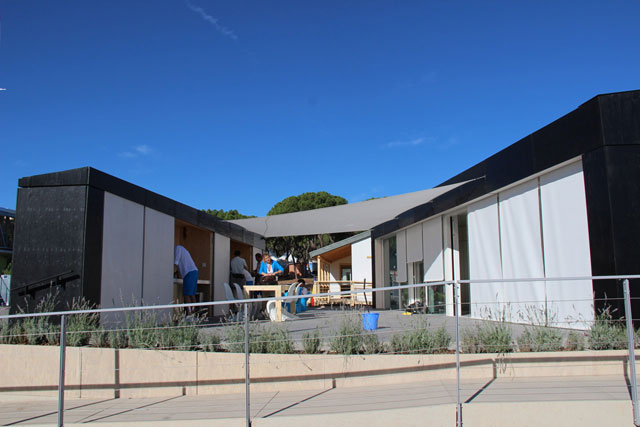
The geometric design of the house is specifically optimized to maximize active and passive solar power year round. The south facade wall is double-paneled, creating a “summer wall” that makes it possible to use the outdoor kitchen during the summer. The wall is layered with vertical solar panels that function as an active energy source in the summer, as well as passive energy in the winter. The innovative layout integrates the building’s interior and exterior so that residents have optimal use of the both.
15. CANOPEA | France
Team Rhône-Alpes (made of students from the Universities of Grenoble, Lyon, and Savoy) brings one of the most contemporary entries to Solar Decathlon Europe 2012. The CANOPEA prototype is actually an extract of the two upper levels of what’s referred to as a Home–Tower community, a group of small individual homes stacked into a vertical tower or “Nanotower.” Each Nanotower is equipped with a system of external passageways that connect the residences with their urban surroundings. The towers are designed with multiple communal spaces, elevated gardens, and vertical farms, innovatively mimicking the qualities of a singular detached house. The CANOPEA towers are designed to meet the challenges of massive urban population density, integrating the qualities of an individual habitat within the context of a city by reducing energy expenditure and conserving natural resources.
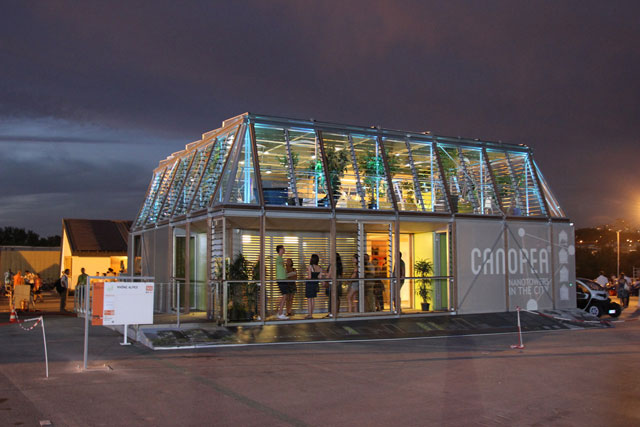
16. Ekó House | Brazil
Team Brazil (a partnership between the University of São Paulo (USP) and the University of Santa Catarina (UFSC), in collaboration with the universities UNICAMP, UFRJ, UFRN and IFSC) entered the competition with Ekó House. Inspired by Brazil’s indigenous tribe, the Tupi-Guaranis, Ekó House focuses on living in harmony with nature despite the many challenges of a varied and harsh climate. It includes building techniques and strategies that have been used for centuries and allow for adaptability in nature’s most extreme cycles.
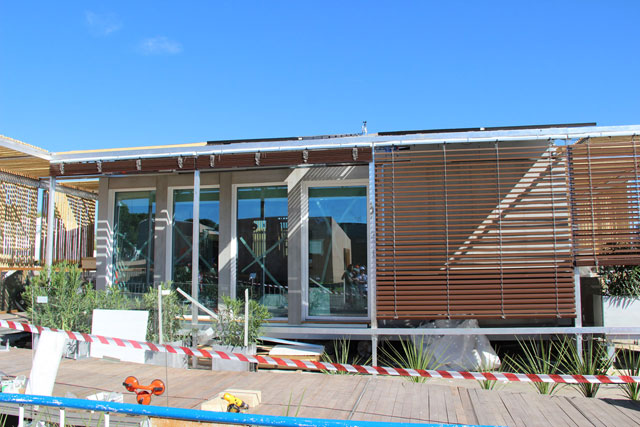
Team Brazil’s wrap-around veranda serves a principal role in obtaining the perfect balance of quality of life and protecting the surrounding environment. The veranda’s automatic shades and panels change position vertically and horizontally throughout the day and year, depending on the sun’s position. This flexibility allows the veranda to act as an integral part of the living space, giving residents the optimal level of light and privacy for their social center as well as a system of personalized temperature control year-round.
17. Para Eco-House | China
The Tongji Team has always been a strong contender at Solar Decathlon, and this year’s entry is no different. Inspired by Daoist principles, the Para Eco House utilizes both passive and active energy systems. The use of bamboo as a “living” lattice wall adds an extra layer of strength, aiding in temperature control as well as increasing the structure’s longevity. Fourteen of the solar panels that cover the roof are equipped with a solar tracking system designed by Tongji University. This automated system allows the panels to follow the sun throughout the day, maximizing solar exposure and minimizing energy loss.
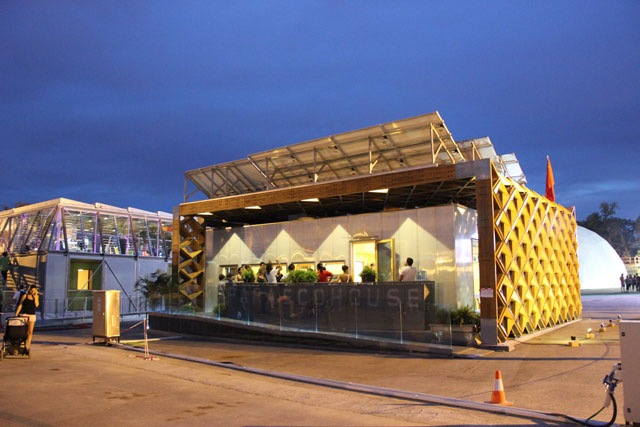
18. ECOLAR | Germany
The University of Applied Sciences Konstanz brings the minimalist ECOLAR Home to Madrid. The ECOLAR structure consists of six almost identical modules that offer a high level of flexibility for personalized configuration. Four of the modules serve as interior spaces, and the remaining two are designed to be used as covered patios. The modular concept of the building not only gives it adaptability as far as size, but it also increases the building’s longevity and reduces overall building costs.
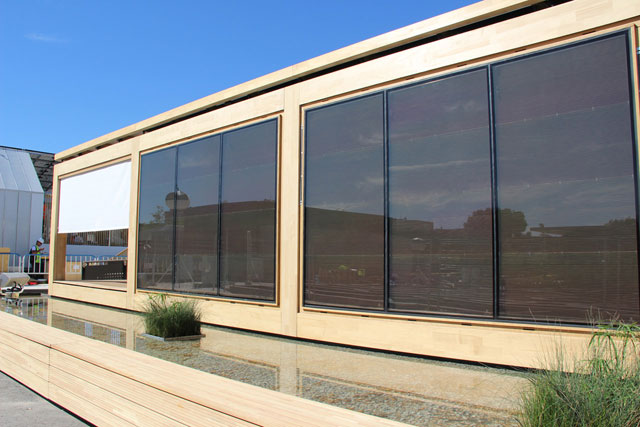
ECOLAR’s exterior patio walls are glazed, which allows for optimal natural light on the interior. The vertical facades are either transparent or fitted with semi-transparent photovoltaic panels.
While the exterior of the house aids in solar production, it is ECOLAR’s roof that contains the optimal solar powerhouse. The use of enriched clay plates on the ceiling as a phase-changing material lets the house efficiently absorb and regulate the collected heat.

Nicole Jewell
Nicole graduated from Georgia State University with a Post Graduate degree in Spanish to English Translation and a B.A. in Spanish and International Business. Presently living in Madrid, Nicole works as a freelance writer and translator and enjoys traveling around the Iberian peninsula taking photos of Spain's rich blend of historic and modern architecture. Her articles and photos have been published in various trade publications and websites.
Website: www.passtheham.com/
co.jpg)
co1.jpg)
co2.jpg)
co3.jpg)
co4.jpg)
co5.jpg)
co6.jpg)
co7.jpg)
co8.jpg)












































































































































































































